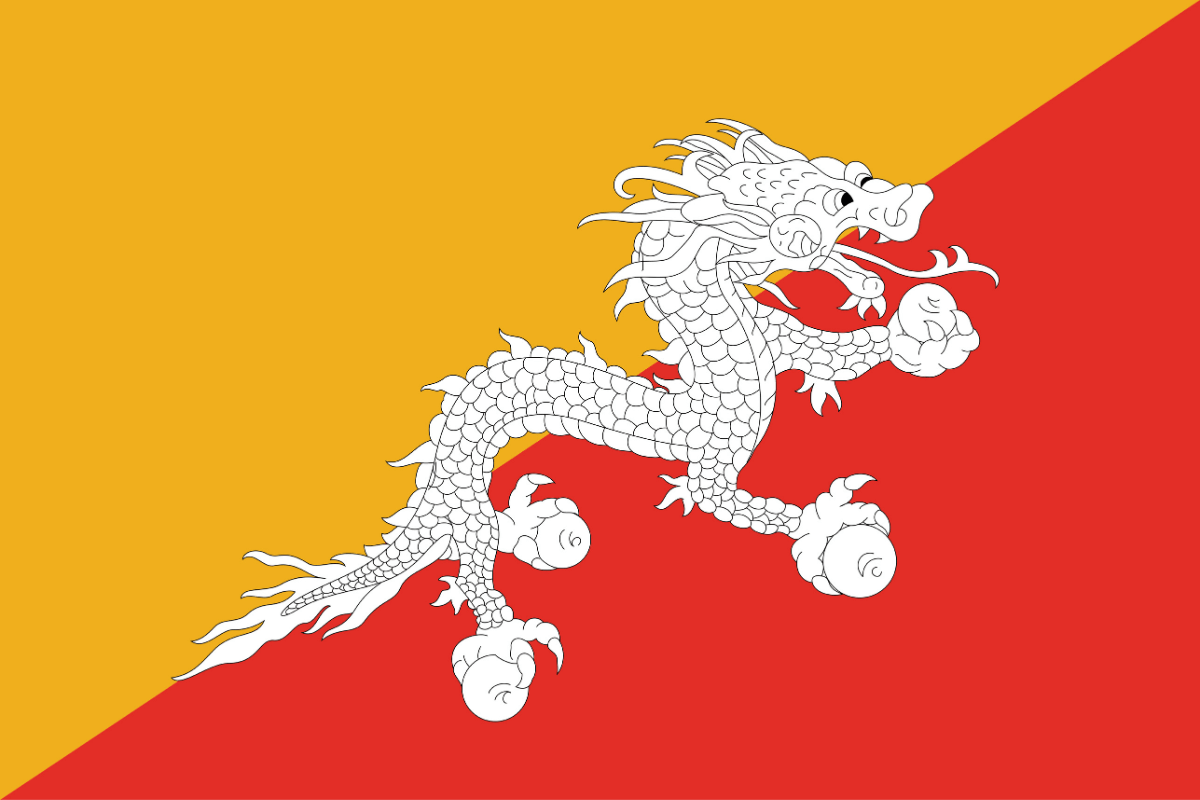The national animal of Bhutan is the takin. This is a bovid which is very closely interwoven with Bhutan religious history and mythology. They are rarer today than they once were and thus harder to see, but remain an important national symbol. Though rare and obscure today, they are vital to Bhutan culture.
So, though you may never even have heard of this animal, the national animal of Bhutan is a very important cultural emblem to the people of the country.
They are among the largest and stockiest of the Caprinae family, which includes domestic animals like goats and sheep, but they are part of a distinct genus of which they are the only extant member.
Let’s find out more.

What is the national animal of Bhutan?
The national animal of Bhutan is the takin.
This is a species of Bovid which is found in the eastern Himalayas.
There are four subspecies of takin, though taxonomically they only have minor differences with one another.
In the past, this animal was grouped in the same family as the muskox, but recent research has revealed they are more closely related to the Ovis family including sheep.
They are, though, very physically similar to muskox, and this is an example of convergent evolution.
They rival the muskox as the largest and stockiest member of their broader family that includes goats.
To look at the face they appear to look like a goat, but looking at the body you would think it more closely related to Bovines.
They have a long, arched nose and two short but stout horns ridged. Both males and females have the horns.
Their coats are long and shaggy and usually feature a dark stripe along the back with otherwise light gold coloring.
Takin generally stand 38 to 55 inches tall at the shoulder, though they are only around 63-67 inches in overall length.
It’s often been posited that the legend of the Golden Fleece, which is hunted by Jason and the Argonauts, may even have been inspired by the lustrous coat of the takin, specifically the golden takin.
This is not something we can ever be certain of, of course, but it is nonetheless a fascinating prospect.
Clearly, then, these animals may have held cultural importance for a very long time in one way or another.
Bhutan decided to make these majestic animals their national animal for a few different reasons—let’s look at a few of them.
Why is the takin the national animal of Bhutan?
The takin is very closely associated with Bhutanese culture and history in many important ways. they have a particularly important place in national myth and legend.
It is said that a Tibetan saint in the 15th Century created this unique animal.
Thus they hold a unique religious and mythological importance as they were brought to the country by figures of religious history.
Their unique and distinctive features have made them an important national symbol even long before it was the official national animal.
Their rarity in the modern day has also influenced the decision to make them the national animal.
It is often an influencing factor in the choice to make an animal the official national animal, conservation.
By bringing more attention to the animal, officials hope to revive interest and love for the animal and bring more in to efforts to preserve the species.
The takin are both kept domestically and hunted for their meat, which while tasty has unfortunately been a leading factor in the decline of the animal’s population.
It’s a complex picture, then.
The animals hold very important national and cultural significance, and yet they are being driven to extinction—or are they?
Is the takin endangered?
The takin is as of now not officially recognized as endangered but vulnerable and at risk.
Their population is declining fairly rapidly for all of the typical reasons: over hunting, destruction of habitat and human encroachment into their historic range.
So, unless something changes in the near future, then the numbers will continue to decline and it may lead to them eventually becoming endangered and finally extinct.
As of today, though, they hold strong and if efforts are made to protect their habitats and preventing excessive hunting, then the species can certainly be saved from endangerment.
Is a takin the same as a goat?
A takin is not the same as a goat although they are fairly closely related.
As mentioned, takins are part of a genus called Budorcas, of which they today are the only surviving member.
One above that, though, is their tribe, called Caprini.
Caprini is the broader taxonomic category which includes many ruminant bovids, including goats.
Takins, then, are quite distinct from goats though again they are closely related.
But they are just as closely related to many antelope, sheep and other historical species which no longer exist.
The resemblance is certainly plain to see with goats though they are much larger and stockier.
It’s not as common for a country to select a fairly humble grazing herbivore as its national animal.
Often you’ll find its some powerful apex predator or elegant tropical bird.
But the takin is an incredibly imposing and awe-inspiring creature in its own right.
They are large and heavy and they look almost like a cross between a cow and a goat.
It’s easy to see why Bhutan should choose it as their national animal.

